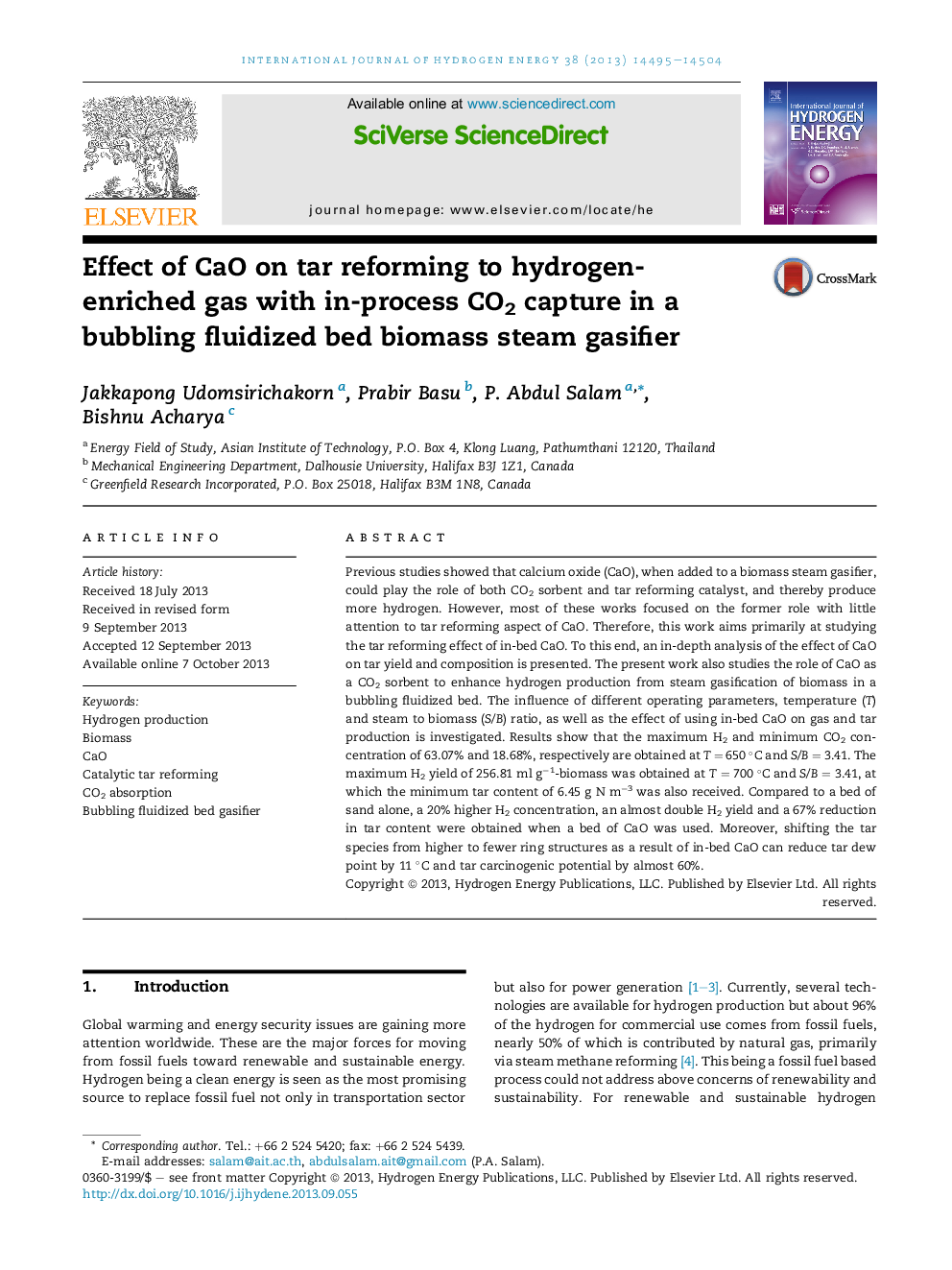| Article ID | Journal | Published Year | Pages | File Type |
|---|---|---|---|---|
| 7721026 | International Journal of Hydrogen Energy | 2013 | 10 Pages |
Abstract
Previous studies showed that calcium oxide (CaO), when added to a biomass steam gasifier, could play the role of both CO2 sorbent and tar reforming catalyst, and thereby produce more hydrogen. However, most of these works focused on the former role with little attention to tar reforming aspect of CaO. Therefore, this work aims primarily at studying the tar reforming effect of in-bed CaO. To this end, an in-depth analysis of the effect of CaO on tar yield and composition is presented. The present work also studies the role of CaO as a CO2 sorbent to enhance hydrogen production from steam gasification of biomass in a bubbling fluidized bed. The influence of different operating parameters, temperature (T) and steam to biomass (S/B) ratio, as well as the effect of using in-bed CaO on gas and tar production is investigated. Results show that the maximum H2 and minimum CO2 concentration of 63.07% and 18.68%, respectively are obtained at T = 650 °C and S/B = 3.41. The maximum H2 yield of 256.81 ml gâ1-biomass was obtained at T = 700 °C and S/B = 3.41, at which the minimum tar content of 6.45 g N mâ3 was also received. Compared to a bed of sand alone, a 20% higher H2 concentration, an almost double H2 yield and a 67% reduction in tar content were obtained when a bed of CaO was used. Moreover, shifting the tar species from higher to fewer ring structures as a result of in-bed CaO can reduce tar dew point by 11 °C and tar carcinogenic potential by almost 60%.
Related Topics
Physical Sciences and Engineering
Chemistry
Electrochemistry
Authors
Jakkapong Udomsirichakorn, Prabir Basu, P. Abdul Salam, Bishnu Acharya,
